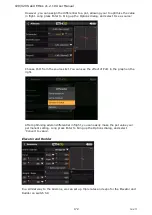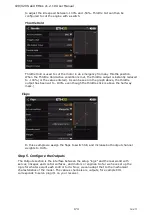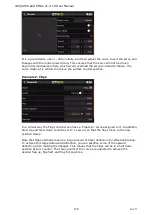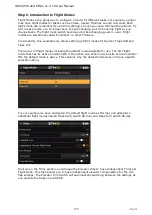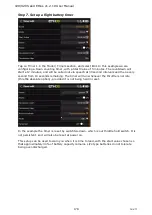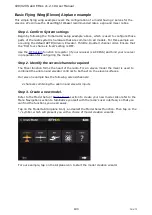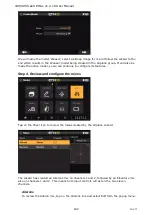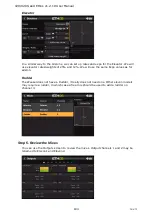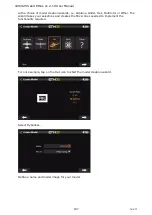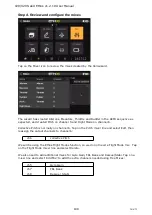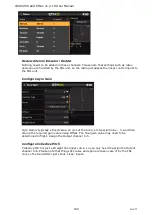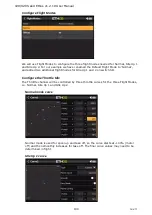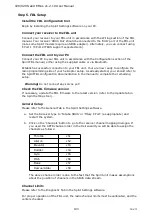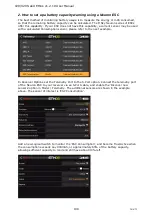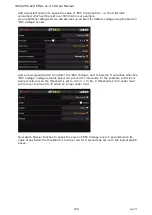
X20/X20S and Ethos v1.2.10 User Manual
Basic Flybarless Helicopter example
This basic flybarless helicopter example covers the configuration of a basic helicopter using an
FBL controller such as the Spirit.
Unlike fixed wing aircraft with dihedral, helicopters are inherently unstable, and rely on a flight
controller using gyros and accelerometers to produce stable flight.
Gyros, which measure the rate of rotation about an axis, and accelerometers, which sense
motion and velocity to keep track of movement and orientation, are the primary contributors
to the determination of yaw, pitch and roll for the flight calculations required for stable flight.
Stability is achieved by the use of a software algorithm called a Proportional Integral Derivative
(PID) control loop. The PID loop requires tuning to achieve stable flight while retaining
responsiveness yet minimizing overshoot. The tuning parameters are a function of the physical
and electrical characteristics of the helicopter.
In this example we will only cover the radio programming side of the helicopter setup. Please
refer to your FBL setup app documentation for the balance of the setup. A good knowledge of
helicopter technology and operation is assumed.
Warning!
Before commencing, to avoid injury, ensure that the rotor blades have been
removed so that you can perform the setup safely.
Step 1. Confirm System settings
Begin by following the 'Initial radio setup example' above, which is used to configure those
parts of the radio system’s hardware that are common to all models. For this example we
are using the AETR (Aileron, Elevator, Throttle, Rudder) channel order.
function to register (if your receiver is ACCESS) and bind your receiver
in preparation for configuring the model.
Step 2. Identify the servos/channels required
The Mixer function forms the heart of the radio. It allows any of the many sources of input
to be combined as desired and mapped to any of the output channels.
Our helicopter example has the following servos/channels:
1 roll (aileron)
1 pitch (elevator)
1 throttle
1 yaw (rudder)
1 gyro gain
1 collective pitch
1 settings bank
1 rescue
Step 3. Create a new model.
section to create your new model. Also refer to the
Menu Navigation section to familiarize yourself with the radio's user interface, so that you
can find the functions you need easily.
section and confirm that the Channel Order is AETR, and
set the 'First four channels fixed' setting to ‘OFF’ to ensure that the channel order created
by the wizard will suit the FBL unit. The Spirit FBL units expect the SBUS channels to be in
this order, despite the fact that it uses TAER in it’s setup.
Tap on the Model tab (Airplane Icon), and select the Model Select function. Create a Heli
category if not already present and select it. Tap on the ‘+’ symbol, which will present you
186
rev 3
Содержание TANDEM X20
Страница 1: ...X20 and Ethos User Manual...

